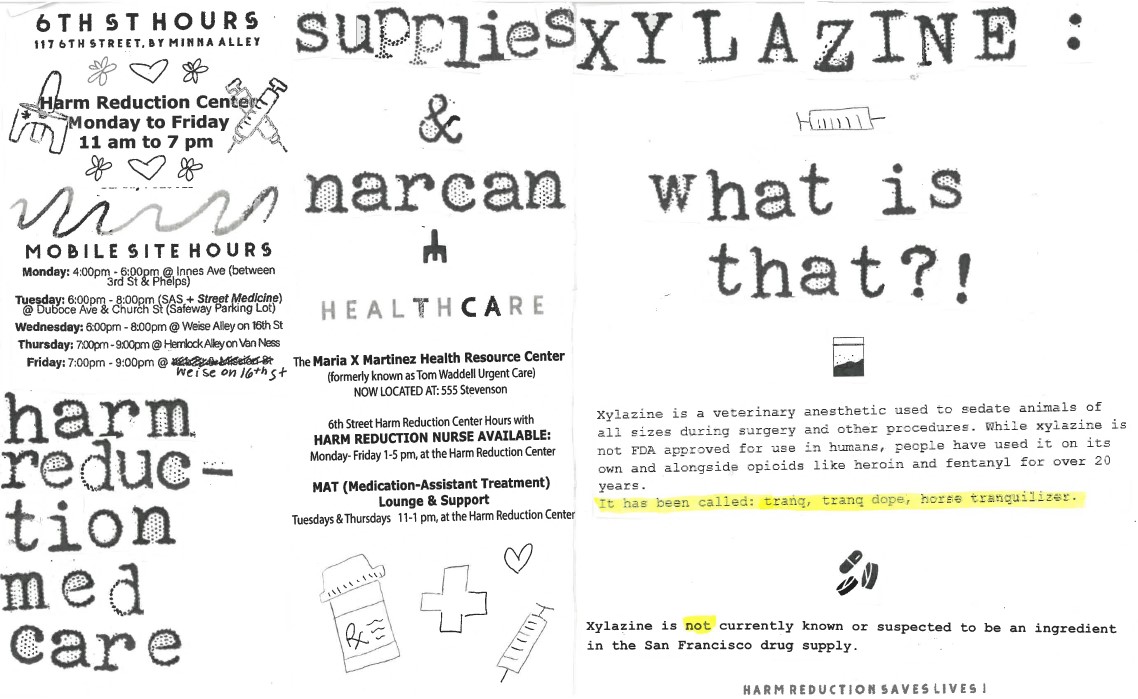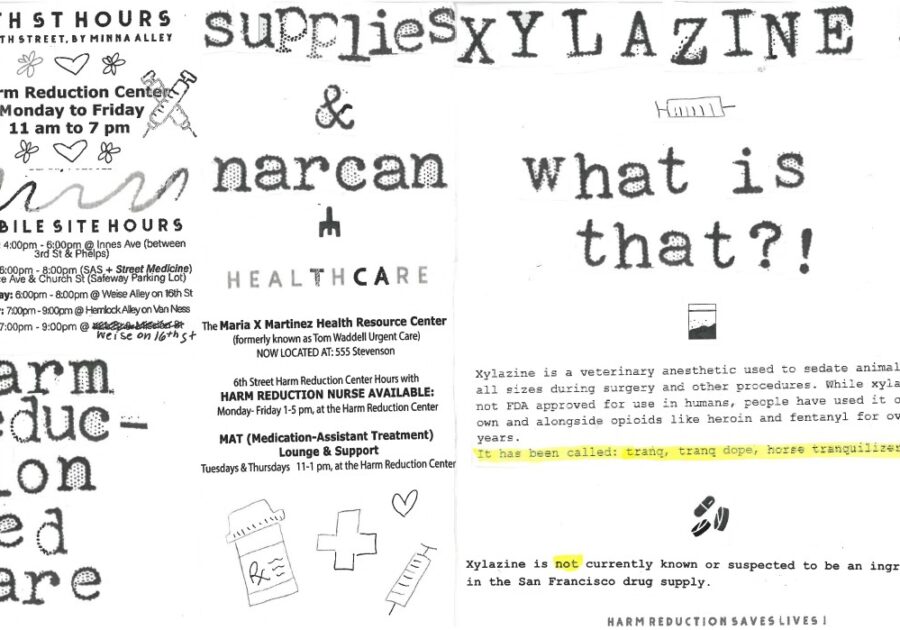Harm Reduction: Xylazine

Xylazine is a veterinary anesthetic used to sedate animals of all sizes during surgery and other procedures. While xylazine is not FDA-approved for use in humans, people have used it on its own and with opioids like heroin and fentanyl for more than 20 years.
It is also called: tranq, tranq dope, and horse tranquilizer.
Note: Xylazine is not currently known or suspected to be an ingredient in the San Francisco drug supply.
Background
Xylazine has become common in Puerto Rico, the East Coast, the Midwest, Appalachia, and the South, where it is usually found in fentanyl, heroin, and other opioids. Sometimes people sell, buy, and use it knowingly–sometimes unknowingly.
What do people who use or study xylazine know about its effects?
Possible effects on body
- Heavy sedation, prolonged unconsciousness
- Blackout, sleepwalking
- Slowed heart rate
- Decreased blood pressure
- Constricted pupils
- High blood sugar
- Anemia, shortness of breath
- Slowed breathing
Effects people have liked (whether they know its from xylazine or not)
- It makes fentanyl feel more like heroin, prolonging the high and holding off withdrawal for longer than fentanyl alone.
- The majority of people say it knocks them out, helping them sleep for many hours after using it.
- Some people say it makes them need a short nap right after using it, after which they wake up and go on about their day.
Risks and negative experiences
- Skin infections that get very serious very quickly, which can take months to heal – no matter whether people inject or use another way.
- Falling injuries while dizzy or blacked out.
- Being robbed or assaulted while blacked out.
- Needing blood transfusion due to severe anemia.
Many people who use xylazine have shared that negative effects, especially skin infections, are the norm and become severe or life-threatening very quickly, and that they feel cons outweigh the pros.
Xylazine and Overdose
The effects of xylazine can be difficult to distinguish from those of opioids and opioid overdose.
If someone is overdosing and used both xylazine and opioids, naloxone can help them start breathing again, though they may remain unconscious.
If you give naloxone (Narcan) to someone who is overdosing:
- Wait 3-5 minutes between doses
- If they aren’t responding after the second dose, we strongly recommend calling 911. Giving excessive naloxone while they are unconscious from xylazine could make them vomit.
- Between doses, check that their mouth is clear of liquid and solids, and give them rescue breaths.
Harm Reduction Tips for Xylazine
Carry naloxone (Narcan). Avoid using alone or where others cannot find you. If someone is found unconscious, unresponsive, and not breathing normally, always administer naloxone.
Start with a little – you can always use more!
Keep an eye out for skin infections (abscesses, cellulitis, etc.), monitor how they progress or heal, and seek medical care right away if they seem to grow quickly or if the tissue starts to turn black.
Test your drugs. Use fentanyl test strips – to confirm your stuff contains fentanyl if you want it, or that it doesn’t if you don’t! Bring your drugs to a drug checking site if you want more in-depth information about what your drugs contain.






